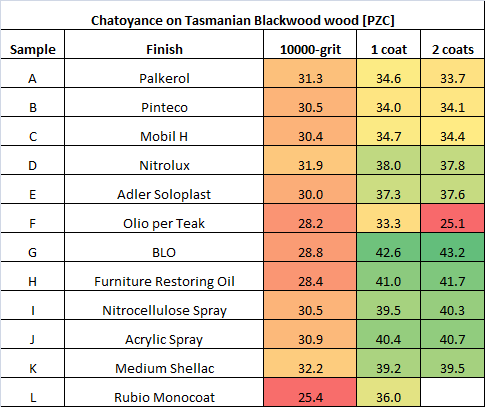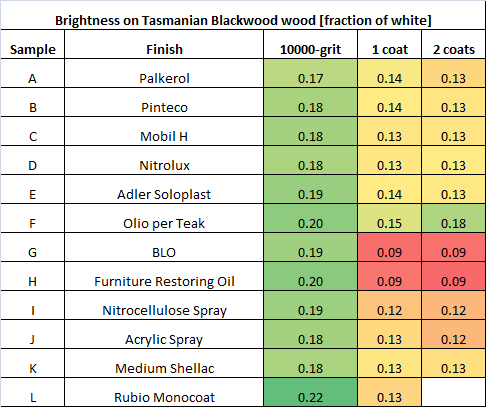This set of tests is aimed at understanding the effect of different finishes on Tasmanian Blackwood.
A set of 6 consecutive veneer sheets (from “A” to “F”) + another set of 6 adjacent consecutive veneers (from “G” to “L”) were employed; these consecutive layers of the initial log and start from very similar PZC values. All samples were sanded to 10000-grit.
A special thanks goes to company Veleca for supporting us with finish samples.
We tested these finishes:
Sample A: Veleca Palkerol (water based anionic polyurethane – floor finish)
Sample B: Veleca Pinteco (acrylic emulsion – outdoor finish)
Sample C: Veleca Mobil H (water based acrylic – furniture finish)
Sample D: Veleca Nitrolux (thinner based ketone resin – classic furniture finish)
Sample E: Adler Soloplast (alkyd based finish)
Sample F: Veleca Olio per Teak (Tung oil based – exotic wood finish)
Sample G: Boiled Linseed Oil (BLO)
Sample H: Furniture restoring oil
Sample I: Nitrocellulose spray lacquer (NCL)
Sample J: Acrylic spray lacquer
Sample K: Blonde Dewaxed Shellac “Medium” (2 parts in 13 parts of Alcohol)
Sample L: Rubio Monocoat
It was concluded that:
1) Many finishes allow to achieve very high results (>40 PZC)
2) All these “clear” finishes significantly darken the surface
Tables below summarize the results in terms of chatoyance (PZC):

Tables below summarize the results in terms of brightness (fraction of white paper brightness):

Pictures below show the results:












